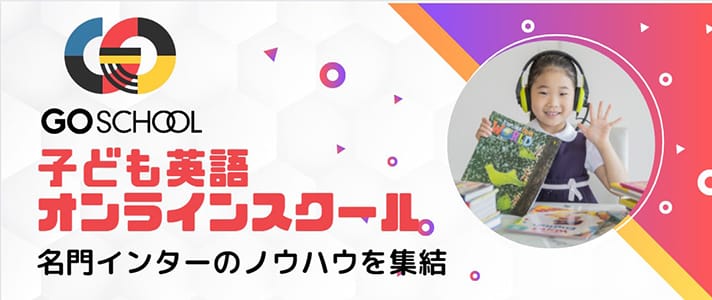Future proofing: Computer Science Education in Japan
What is happening
Before Japan’s Ministry of Education, Culture, Sports, Science, and Technology (MEXT) decided to push forward its GIGA School Program, they announced that programming will become a mandatory subject in elementary school. This curriculum change is a huge accomplishment as this type of revision will occur for the first time in 10 years. The government announced that the change in elementary schools will happen in 2020, junior high in 2021, and high schools in 2022. Although programming lessons have been a part of the technology and home economics subject in Junior High schools, the educational scope will expand. Similarly, in high schools programming lessons were a part of the computer science (CS) subject area as one of the mandatory courses but after the revisions, all students will learn programming under the technology subject area. Furthermore, the National University Entrance Examinations will add questions relating to programming or information technology fields starting with the January 2025 test.
https://edujump.net/dev/news/2856/
The main goal for this new modification for elementary school students is to not create a new subject area, but rather to incorporate programming into existing subjects that both directly and indirectly follow the guidelines. For example in extra-curricular activities or on their own outside the classroom. For instance, students can understand the order and position visually in math class through using Scratch, or spreading awareness about the students’ town by using PrograChat. According to NikkeiAsia, MEXT approved new textbooks that incorporate coding skills into existing lessons such as “digitally drawing polygons and making LED lights blink using simple commands” which was already a part of the math and science curriculum. These are some of the many examples of how elementary schools can incorporate programming which are all provided on a portal website called the “Future Programming Education Portal” (shortened as Mira-Puro) provided by MEXT.
NikkeiAsia says that the coding basics will start being taught in fifth grade with the aim “to instill the fundamentals of using code to handle information, as well as to teach logical thinking through trial and error.”

Market size and growth potential
Statista Reach Department released data about the “Market size of programming education for children in Japan from 2018 to 2019 with forecasts until 2025”. According to their data, the growth of the market size from 9.07 billion yen in 2018 to 14 billion yen in 2020 is apparent. Within these two years, the size has grown immensely as programming became compulsory in primary school education from 2020. They expect that the rise will continue to accelerate, with its number almost doubling by 2025.
Other research, a joint study from Coeteco by GMO and Funai Soken for example, also supports the expected increase in the programming education market in Japan. Many are focusing their attention on this market as programming classes have increased by 139% by 2020.
This market includes not only programming classes, but also programming materials, such as textbooks and languages. According to DIME, programming materials can be categorized into two: visual and robot programming. Scratch, developed by Massachusetts Institute of Technology Media Lab, dominates the visual programming area in both Japan and worldwide. On the other hand, there are various teaching materials in the robot programming field, including Lego’s Mindstorms and Sony Global Education’s KOOV ®. This area has been explored by various industries and there is space in which textbook industries can grow in.

Future obstacles to overcome
The main issue with this new change is the programming education for teachers. Since the homeroom teacher is responsible for teaching all subjects to their respective students, training teachers in this field, in order to shape their course according to MEXT’s guidelines will be necessary. Even with Mira-Puro, teachers would have to understand the software that the lesson plan uses and be proficient in it.
Japan had a slow start on compulsory programming education, as the rest of the world such as The UK and South Korea have already started installing programming courses in their primary schooling. However, with the lack of IT technicians and IT fluent workers in Japan right now, the future of the technology sector seems to be more promising with this step in childhood education.

What I think
This change reflects the current advancement and demand in technology worldwide. When I went to a Japanese public elementary school for the summer, there was a computer class. I remember I finished the tasks at triple the speed of other students and went around the class to help others. For the remaining time, I was the center of attention because of my ‘advanced’ computer skills which I had already by making posters or writing stories using Microsoft Word or Glogster (don’t even know if this still exists!).

As for international schools in Japan, in my high school there was only one non-AP CS course. When I visited after I had graduated, I saw that there were more programming courses available including robotics courses for elementary and junior high students, and an AP CS course. Many students at my university (in the U.S.) already had some kind of programming exposure at school or at least various options for computer science education. This difference in computer science education was very apparent through experiencing both primary public Japanese schools, international schools in Japan, and U.S. universities.
Even if students don’t end up becoming software engineers or data scientists in the future, these skills are definitely worthwhile. Not only is technology an integral part of our society today, but also the fundamentals of programming classes help students understand and apply logical thinking.

MEXT’s decision to include programming courses from an earlier age is definitely a huge advancement to the new social standards that they will live in the future.
Japan’s compulsory education system consists of elementary, junior high school, and high school, which lasts for 9 years in total. The enrollment rate through this area is very high with 99.96% in 2019, according to Statista 2021.
本記事は、日本語でも公開されます。
次記事は、日本のプログラミング教育について寄稿予定です。
Reference:
https://www.statista.com/statistics/1200377/japan-market-size-programming-education-children/
https://www.researchgate.net/publication/342379056_Benchmarking_ICT_for_Education_in_Ja[…]ons_Learned_for_Philippine_ICT-Based_Education_Development
https://tokyoesque.com/japan-education-sector/
https://www.statista.com/statistics/1200377/japan-market-size-programming-education-children/#:~:text=In%202019%2C%20the%20market%20size,more%20than%20double%20by%202025.
https://asia.nikkei.com/Economy/Coding-will-be-mandatory-in-Japan-s-primary-schools-from-2020
https://meti-journal.japantimes.co.jp/2020-01-24/
https://time.com/2881453/programming-in-schools/
https://www.fnn.jp/articles/-/23054
https://www.nippon.com/en/news/yjj2021032400887/
https://miraino-manabi.jp/
https://www.statista.com/statistics/1200377/japan-market-size-programming-education-children/
https://resemom.jp/article/2020/03/26/55512.html
https://dime.jp/genre/902160/
https://asia.nikkei.com/Economy/Coding-will-be-mandatory-in-Japan-s-primary-schools-from-2020
https://www.statista.com/statistics/1200377/japan-market-size-programming-education-children/#:~:text=In%202019%2C%20the%20market%20size,more%20than%20double%20by%202025.




